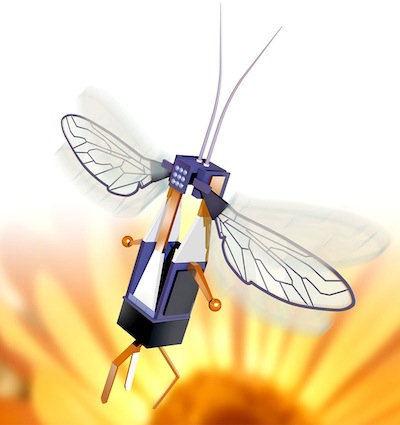Vehicle technology could save soldiers' lives.
By Noor al Haqiqa
Robobee is the latest buzzword at Harvard University and Northeastern University, which received a $10 million grant to create a swarm of robotic bees. Based on news reports, it appears that researchers are attempting to build an entirely mechanical flying insect.
Researchers at the Autonomous Vehicle Laboratory at the University of Maryland are using a $12 million grant to study the way insects, birds, snakes, and bats navigate and communicate.
Their Micro Air Vehicles, or MAVs, could be used to carry out dangerous air surveillance and save lives on the ground.
Joseph Conroy, an engineer at the Maryland Lab, says, “We would like these vehicles to emulate the insects’ ability to go through an environment without hitting obstacles.
“As a biologist, I am studying how insects fly in their environments,” says Jason Vance, “so that we can develop strategies by which to program these autonomous flyers to be able to respond to their environment.”
Bees and bee colonies have long been held up as models of efficiency and coordination. Using a host of different sensors, unique communication protocols, and a precise hierarchy of task delegation, thousands of bees can work independently on different tasks while all working toward a common goal ~ keeping their colony alive. Researchers in this Expedition will create robotic bees that fly autonomously and coordinate activities amongst themselves and the hive, much like real bees.
The research team aims to drive research in compact high-energy power sources, ultra-low-power computing, and the design of distributed algorithms for multi-agent systems. Furthermore, the RoboBees created will provide unique insights into how Mother Nature conjures such elegant solutions to solve complex problems.
Take a look at this unique video of the robotic fly taking its rightful place in the Museum of Modern Art.
Science fiction fans should be happy about this; purely robotic insects have been taken seriously by science fiction writers for almost three-quarters of a century. Technovelgy readers are of course familiar with the amazing scarab robot flying insect from Raymond Z. Gallun's 1936 story The Scarab:
Read more at the Harvard Robobees homepage and the NSF press releaseThe Scarab paused on its perch for a moment, as if to determine for itself whether it was perfectly fit for action. It was a tiny thing, scarcely more than an inch and a half in length...
...the Scarab buzzed into the great workroom as any intruding insect might, and sought the security of a shadowed corner. There it studied its surroundings, transmitting to its manipulator, far away now, all that it heard through its ear microphones and saw with its minute vision tubes.
Conroy is manning the robots for now, but he says the goal is for the MAVs to be completely independent.
This scheme will seem a whole lot less crazy if you recall that Harvard had a life-size robotic fly that was operational (mostly) back at the beginning of 2008. Even with that foundation, developing the body of the robot is going to be no small challenge, but there’s also the brain of each robobee plus the organization and communication of the colony as a whole to consider.
All of the aims and goals of the project revolve around “pushing advances” and “spurring innovation” as opposed to creating a robobee army. Which is good, I guess.
“As a biologist, I am studying how insects fly in their environments,” says Jason Vance, “so that we can develop strategies by which to program these autonomous flyers to be able to respond to their environment.”
The enthusiasts are studying everything from the motion of a honeybee to the precise flapping of wings…to finally producing microchips which function just like an insect’s brain.
Sources:

No comments:
Post a Comment
If your comment is not posted, it was deemed offensive.